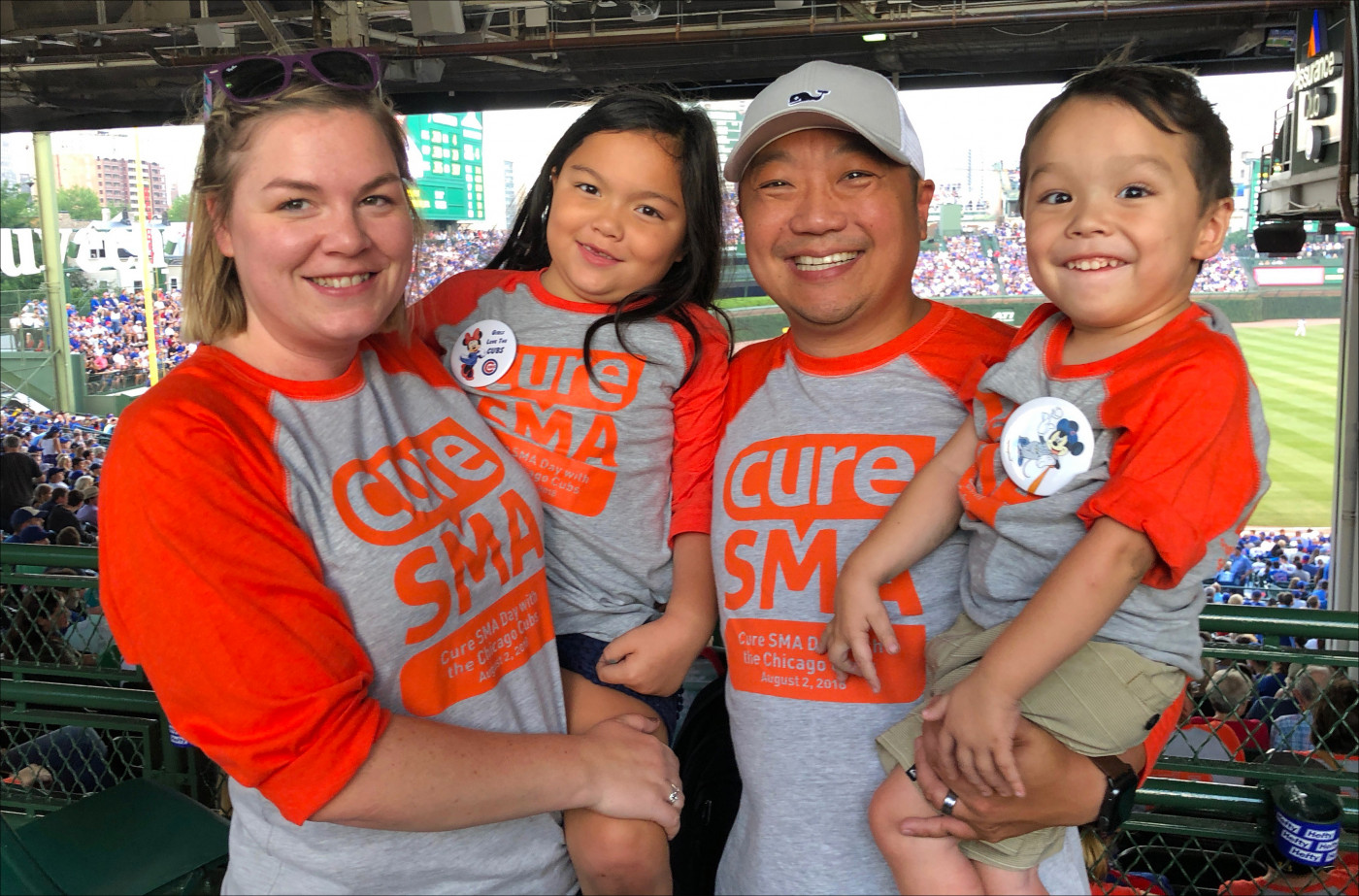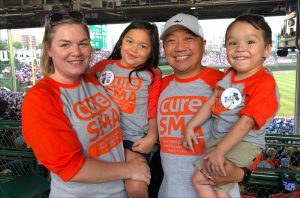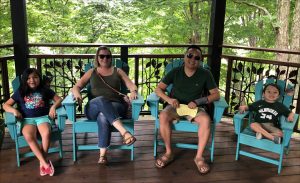Wisconsin Mom Credits Spinraza with Restoring ‘Quality of Life’ to Her Kids with Type 2 and 3 Disease

Danyelle, Ruby, Terence and Landon Sun of Milwaukee. (Photos courtesy of Danyelle Sun)
Danyelle Sun, a Milwaukee mother of two children with spinal muscular atrophy (SMA), says Biogen’s Spinraza (nusinersen) has rescued both her kids from potentially lifelong disabilities.
Sun, 35, is the Wisconsin state ambassador for NORD, the National Organization for Rare Diseases. Her 7-year-old daughter, Ruby, has SMA type 3, while her 4-year-old son, Landon, has type 2.
“When Ruby was 15 months old, she was taking steps but should have been running,” said Sun, during an interview at the 2018 NORD Rare Diseases & Orphan Products Breakthrough Summit in Washington, D.C. “We were told to wait and have her checked again at 18 months. I took Ruby back to the pediatrician and put her down in the hallway. As soon as the pediatrician saw her gait, she referred my daughter to a physical therapist, who advised me to see a neurologist.”
Three months later, Danyelle Sun and her husband, Terence, received the diagnosis: SMA, an inherited neurodegenerative disease characterized by the loss of specialized nerve cells that leads to progressive muscle weakness.
In August 2013, shortly after learning she was once again pregnant, Sun underwent prenatal testing at 11 weeks. She found out that the boy in her womb also had SMA.
“Genetically, Ruby and Landon look totally the same. Both have zero copies of the SMN1 gene, and three copies of SMN2. But we knew we’d just have to wait and see how he presented,” she said, explaining how Landon was healthy until around 10 months of age, at which point his legs could no longer bear any weight.
It became a daily struggle for Danyelle, a clinical social worker, and Terence, a salesman, to care for their children.
Join our forums and be part of the SMA News Today Community!
“They just continued to lose strength, Landon especially. And once he started to decline, he declined fast,” she said. “At his weakest, he was unable to sit on the floor for more than 15 seconds. He would just topple over. I always had clothes around him to protect him. He couldn’t crawl anymore, and couldn’t raise his hands higher than his shoulder. He lost his appetite.”
At age 2 and a half, Landon still weighed only 19 pounds — the same as when he was 1 year old. His parents had a feeding tube installed and put the boy on a cough assist machine.
Then a breakthrough occurred in December 2016. Spinraza became the first therapy to win U.S. Food and Drug Administration approval to treat SMA in both infants and adults, after it showed statistically significant improvements in both motor function and survival. Five months later, Wisconsin added the infusion treatment to its Medicaid formulary — and both Ruby and Landon were given a first Spinraza dose on July 18, 2017.
Since then, the siblings have each received seven infusions, with their next scheduled for mid-December. The results have been profound and long-lasting.
“Spinraza has improved their quality of life so much, because they’re so much more independent now,” Sun told SMA News Today. “Ruby can now brush her teeth and comb her hair by herself. She gained energy right away.
“It’s helped her motor skills, so at school she needs no adaptive equipment for writing or taking tests. She is completely independent in getting out of her wheelchair and back in. She can go to the bathroom by herself. Before, she would hold it in all day long because she didn’t want someone else to take her.”
Landon showed improvement immediately, his mother said.
“Within two to three weeks of his first injection, he was sitting on a stool, reaching for things and pulling himself back up,” Sun said. “Now his respiratory strength has improved so much, he hasn’t needed any increased breathing treatments when sick for a whole year. He can now cough well enough to move stuff out of his lungs. He’s just now starting to get himself into a sitting position from laying down, and then onto his hands and knees.
“You have to go into a hospital to get the treatment and have an actual spinal injection as opposed to taking an oral medication,” she said. “But it’s not anything that ever deterred us.”
Unlike some other families affected by SMA, Danyelle and Terence Sun have faced no insurance denials for covering their children’s therapy, which at $750,000 for the first year and $375,000 each year thereafter is one of the world’s most expensive medications.
“We’re one of the luckier states,” said Sun, who considers Wisconsin to be very progressive when it comes to Medicaid coverage for SMA kids. In fact, NORD’s Rare Action Network’s 2018 State Report Card gave the Badger State an “A” in both Medicaid expansion for adults and Medicaid eligibility for children, which it calls “excellent.”
Wisconsin also scores well when it comes to newborn screening, though it lacks a Rare Disease Advisory Council.
“The future of SMA is nothing like when we had Ruby and got her diagnosis. Now we have Spinraza, but other drugs also look really promising,” Sun said. She added that she’d like to bring another child into the world — even if there’s a chance that child might have SMA.
“My husband says if the Brewers win the World Series we can have a third,” she joked.










